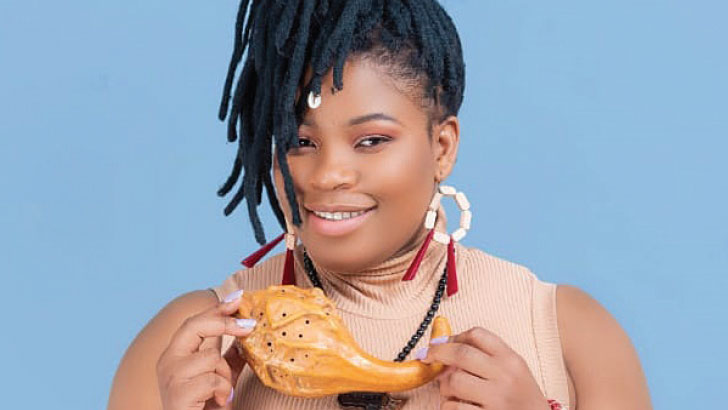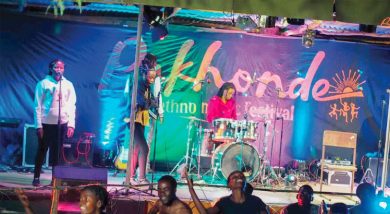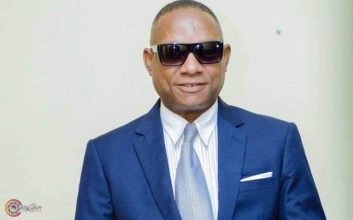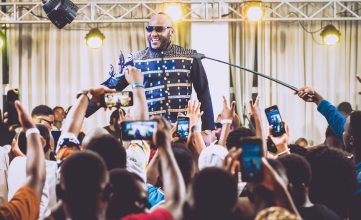Back to their roots
While some local artists are drawing their inspiration from the West, others have chosen to remain home.
This is a new generation of artists making music rooted in traditional instruments such as gourds and calabashes that since time immemorial are among items that define African culture.
Those that have watched performances by Nyago, Kadrum, Sindi Golden, Keturah and Mizu Band lead singer Winnie Msowoya, among others, will attest to the fact that these female artists’ irresistible harmonies derive their power from careful use of traditional instruments.
From badza, a Tumbuka instrument which mganda dancers in the Central Region use as a trumpet, to nkhombo, which is also called chikho, these artists use anything that can produce music.

The Nyago spirit
Her music is spiritual as it thrives on vimbuza, a tradional dance that has healing powers popular among the Tumbuka in the Northern Region.
She fuses the enchanting rhythms and melodies of the curative tradition with elements of jazz, soul and folk.
So, her performances are characterised with her extraordinary soulful voice plus a litany of traditional instruments.
A self-taught nkhombo and mbira (popularly known as the African thumb piano) player, Nyago embodies what it means to be a daughter of Africa.
She said in an interview: “Traditional music is my calling, and I have incorporated traditional instruments such as nkhombo, mbira and drums because they help me connect with the spirit of the music.
“I sing in Tumbuka because that is my first language and I feel it is very important for everyone to celebrate their mother tongue.”
For Nyago, playing music using traditional instruments is a calling.
“It is a calling for me so I don’t have any other choice but to answer and do the best that I can,” said the artist whose real name is Lucy Gondwe.
She said traditional music brings healing to people.
Sain Nyago: “It connects us to our ancestors, our parents, our children, our society and, most importantly, to our innermost selves. It’s very important to listen to the message and connect.”
Faith Mussa, for example, is an artist who for the past five years has taken keen interest in such instruments such that almost wherever he performs, he never fails to show up on stage with his badza.
Nyago believes this shows a cultural awakening amongst a number of local artists; hence, focusing on local instruments.
“They say ‘who feels it knows it’ and I am adding to say ‘it’s now or never’,” she said.
Sindi’s golden voice
For many, Sindi Golden is a new voice on the music scene. The Lilongwe-based artist also has interest in local instruments.
Just like Nyago, she does not just have them on her set, but plays some.
“I incorporate traditional drums and Hosho type of shakers commonly found in Zimbabwe. I want to stay connected to my roots so vimbuza and mbotosya [ndolo] and the other genres are my focus,” she said.
Sindi said these are some of the dances and music she was exposed to at an early age.
“They also speak to my soul,” she said in a separate interview.
Hosho dzemapudzi belongs to the same family of badza but consist of gourds with seeds; hence, being more of a traditional shaker.
Her music draws much influence from the legend late Wambali Mkandawire.
“That is why my music is a fusion of traditional genre of vimbuza, mbotosya and ingoma and I sometimes fuse them with urban-Afro music in some of my pieces. My songs are bilingual and it is by design,” she said.
Real name Hellen Nyasulu, the musician said: “I like the way many others, am keeping it going. Some generations to come should find a way back home. Also, the market and the world are saturated with other countries’ music and genres.”
Sindi said sometimes people from other countries love to hear what your beliefs, dances, and way of life are as an artist; hence, the awakening.
“We need to sell Malawi music,” she said.
The musician started composing music in 2005, but her breakthrough came 12 years later.
She won a scholarship to study at the Music Crossroads Malawi in 2017 after winning the I Can Sing it Better competition the previous year organised by Zodiak Broadcasting Station.
“While there, I was selected to go to Maputo, Mozambique where I did projects with other participants from Norway by teaching children music,” she said.
Her writing has been influenced by her upbringing in a Christian environment.
The sounds of Kadrum
Fairly new on the music scene, Kadrum is a 24-year-old musician one would mistake for Beninese singer and songwriter, Angelique Kidjo.
From the slender frame, short natural hair to the vocal prowess, the two have a lot in common.
Kadrum’s inspiration in traditional music and instruments stems from her upbringing, in the North.
“I grew up listening, watching and during children playtime, singing folk songs and dancing to traditional tunes. Listening to visekese, mphininga and singing in Tumbuka or other Malawian languages brings out the authenticity of our culture,” she said.
While she plays acoustic and bass guitars and none of the traditional music instruments, Kadrum derives pleasure in incorporating the local magic.
“They help me with my song writing cause of the acoustic sounds. So, during performances, I use shakers, traditional drums and malimba/timbila. This reminds us of who we are and where we are coming from,” she said.
Currently studying music at Music Crossroads Academy majoring in bass, Kadrum, whose moniker is borrowed from her middle name Kang’oma, says the new trend is what defines her.





